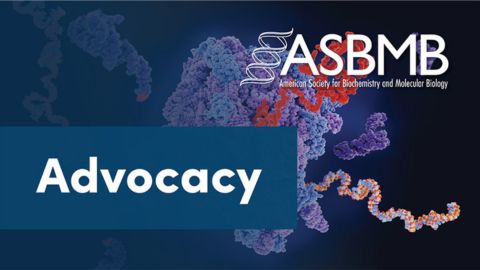National Academies report calls for antiracist reforms
The National Academies released a report last month on how structural racism is embedded in institutions that educate, train and employ professionals in the fields of science, technology, engineering, mathematics and medicine.
The Feb. 14 report’s authors concluded that existing systems inherently disadvantage people from underrepresented groups, and they recommended overhauling admissions, hiring, promotions, awards and more at, for example, universities, nonprofits, hospitals and companies.
“Racism is embedded in our society,” wrote the authors of “Advancing Antiracism, Diversity, Equity and Inclusion in Science, Technology, Engineering, Mathematics, and Medicine Organizations.” While racial biases held by individuals certainly must be addressed, they said, “structural racism requires active antiracist change at a system level.”
The authors — a panel of experts on the science of antiracism, diversity, equity and inclusion; psychology; sociology and implementing programs at STEMM organizations — emphasized that their work, which drew from the literature and lived experiences, “shows that patterns exist in the data and are not matters of opinion or moral judgments.”
The report offers the following conclusions and corresponding recommendations.
Addressing structural and institutional racism
Conclusions: Historic systemic racism in the U.S. has harmed and continues to harm people from minoritized groups. Minority-serving institutions “provide culturally responsive student and faculty support” and can serve as models for predominately white institutions and other organizations.
Recommendations: Funders, philanthropies and other organizations that issue grants should invest in efforts to better understand how the policies, programs and practices of MSIs support students and faculty. Also, predominately white institutions should partner sustainably with MSIs.
Collecting better and more useful data
Conclusion: The rate at which people from underrepresented groups obtain STEMM degrees lags behind their national population growth. Data on persistence, completion and transfers are lacking.
Recommendation: The National Center for Science and Engineering Statistics and the National Center for Education Statistics, among other organizations, should collect and share information on the demographics of students entering college to study STEMM and their educational outcomes by race, ethnicity, gender and field.
Exploring and learning from lived experiences
Conclusion and recommendation: Efforts to explore and document the experiences of marginalized groups are valuable and should be expanded.
Leveraging professionals and organizations
Conclusion: Marginalized individuals in STEMM respond to systemic racism by leaving the field, implementing tactics to fit in or transforming their environment.
Recommendations: Leaders and gatekeepers (people who can prevent access to resources) should do the following to “improve minoritized people’s individual and interpersonal experiences”:
-
Collect and transparently present diversity data.
-
Hire a critical mass of minoritized people, in particular where role models are lacking.
-
Address discrepancies between institutional diversity statements and organizational reality.
-
Recognize minoritized individuals in multiple formats, such as film and awards.
-
Amend curricula and other content to “incorporate more examples of minoritized role models.”
-
Change the physical environment to be more inclusive of minoritized people.
-
Invest in evidence-based programs that increase minoritized people’s access to others in STEMM careers (such as bridge programs and professional networks) and in-group peers (such as peer mentorship programs).
-
“De-center White professional norms in culture, dress and appearance.”
-
Ensure people have access to “culturally responsive mental health providers or resources with experience in addressing racial stress, trauma and aggressions.”
Addressing individual bias and persistent inequality
Conclusion: Gatekeepers (such as principal investigators, heads of research groups, human resource officers and others) “may not be able to monitor their own bias impartially” and “may unwillingly perpetuate it.”
Recommendations: Organizations should create systems to collect data on the decisions of gatekeepers, develop more inclusive decision-making processes and include antiracism leadership duties in job descriptions for management positions.
Understanding and leveraging diverse teams
Conclusion: Conditions and policies that promote inclusion in STEMM organizations are required to end systemic racism.
Recommendation: Managers should increase team representation of minoritized individuals, promote equal status among team members and create a psychologically safe environment.
Understanding the role of leadership
Conclusions: Racial discrimination persists in the use of standardized testing, hiring, tenure processes and professional development efforts.
Recommendation: Organizational leaders such as CEOs, hiring managers, human resources supervisors and admissions officers should overhaul organizational processes that reproduce negative outcomes — such as fewer callbacks, lower offers for wages and startup packages, lower-ranked titles, and more critical evaluations — for people from minoritized groups at critical points of access and advancement.
‘A multi-tiered strategy’ is needed
The authors of the report stressed that both structural and mental paradigm shifts are needed.
“(T)his report emphasizes that the concepts of antiracism, diversity, equity, and inclusion are not goals for which a simple checklist will indicate success,” the authors wrote. “Rather, they are goals that reflect culture change, accomplished by the creation of environments that focus on inclusive excellence, where all participants have access to educational and professional opportunities, feel included, and have the resources to actualize their full potential. In order to do this, STEMM organizations will require ongoing leadership, resources, and commitment to ensure that these values become part of an intentionally maintained organizational culture.”
Many organizations have promoted antiracism by training personnel to recognize their unconscious and conscious biases. However, the report emphasized that work that focuses on individual actions is insufficient. Systemic changes must be initiated at the team and institutional levels.
“(T)he committee and this report encourage a multi-tiered strategy that calls for change at the institutional and team levels,” the authors wrote. “The combination of removing barriers for entry and for participation, while implementing practices that convey belonging, will allow a STEMM organization to move from broadening participation by the numbers to fostering a culture of inclusion, thriving, and success.”
Ciearra Smith is the manager of diversity, equity and inclusion programs at the American Society for Biochemistry and Molecular Biology. Smith said that it’s clear that the paradigm shift called for by the National Academies will take time to achieve and require the intentional efforts of scientists, academic leaders, executives, administrators, policymakers and more.
Smith emphasized that the first step in enacting change requires STEMM organizations to conduct audits of their current diversity, equity, accessibility and inclusion policies. Such evaluations should continue indefinitely, she added.
“We are disheartened but not surprised by the findings of the National Academies report,” Smith said. “The ASBMB is committed to promoting a culture that values diversity, equity, accessibility and inclusion and one that supports scientists from historically marginalized backgrounds. We have been advocating for historically marginalized groups and systemic change in and outside of ASBMB with our policy and programmatic activities. Just one example of this is our collaboration with the National Black Postdoctoral Association to ensure all perspectives are accounted. This report gives institutions concrete strategies for changing their culture, but it will be up to their stakeholders to institute positive change.”
Enjoy reading ASBMB Today?
Become a member to receive the print edition four times a year and the digital edition monthly.
Learn moreGet the latest from ASBMB Today
Enter your email address, and we’ll send you a weekly email with recent articles, interviews and more.
Latest in Policy
Policy highlights or most popular articles

Building a stronger future for research funding
Hear from Eric Gascho of the Coalition for Health Funding about federal public health investments, the value of collaboration and how scientists can help shape the future of research funding.

Councilors advocate for science on Capitol Hill
ASBMB Councilors meet with their elected officials to advocate for basic scientific research funding and training the next generation of scientists.

Hope for a cure hangs on research
Amid drastic proposed cuts to biomedical research, rare disease families like Hailey Adkisson’s fight for survival and hope. Without funding, science can’t “catch up” to help the patients who need it most.

Supporting science through advocacy and community building
ASBMB calls on scientists to take action as funding cuts and policy shifts threaten the U.S. research enterprise, emphasizing the power of community advocacy and persistence in protecting the future of science.

Seven steps to advocating in your home state
Find out how to schedule, prepare for and conduct a productive district office meeting to communicate the importance of fundamental scientific research funding to your representatives.

ASBMB members call for funding and agency support amidst uncertainty
In 60 meetings on Capitol Hill, scientists urge legislators to reaffirm support for scientific innovation

